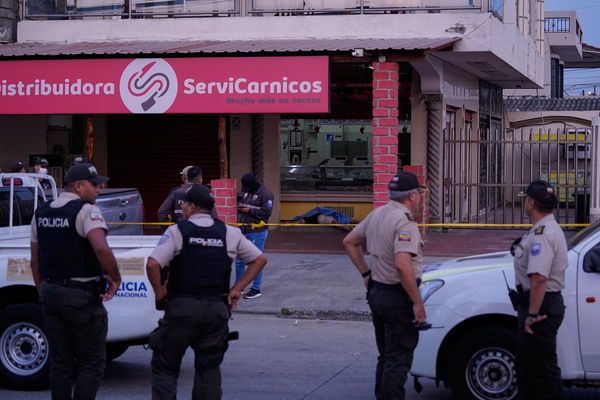
Boutique destinations offering authentic, off-the-beaten-track experiences are becoming the way to travel, as holidaymakers increasingly question the value of overtourism, nature-exploiting excursions and holiday cliches. Just over two hours away by plane, Slovenia fits the boutique bill – and then some. You’ll find gorgeous scenery, outdoor adventure and wellness, as well as vibrant cities, culture and superb gastronomy. Welcome to the green heart of Europe …
For culture
Slovenia has a long and rich history – and a vast amount of culture to show for it. The capital Ljubljana is distinguished by its outstanding art nouveau buildings, but also boasts some breathtaking baroque architecture. Away from the cities, sprawling medieval castles dot the landscape, and you’ll find bijou churches and chapels hidden away in the hills – and there are plenty of small, beautifully preserved old towns such as Škofja Loka, Kranj, Piran or Maribor waiting to be discovered.
There’s no shortage of museums and galleries, with enough in Ljubljana alone to keep you busy for several days. Standouts include Cukrarna, Ljubljana’s brand new contemporary art gallery housed in a former sugar refinery; the National Gallery in Ljubljana, along with the Museum of Modern Art and the Slovenian Ethnographic Museum; and Plečnik House, a museum dedicated to the work of Slovenia’s greatest architect Jože Plečnik, sited in his former home. Offsetting these are smaller alternative galleries, and there’s plenty of edgy street art in Ljubljana’s Metelkova district.
Traditional culture and festivals are also alive and well in Slovenia. Highlights include Kurentovanje, the annual Shrovetide carnival in Ptuj; and the Passion Play in Škofja Loka, a performance so elaborate (the whole town is involved) that it only takes place every six years – the next one happens in 2026.
For nature
One of the defining features of Slovenia is its landscape – or rather landscapes, which encompass everything from soaring mountain peaks and lush alpine meadows, to jewel-like lakes and sprawling forest, rolling hills carpeted in vineyards, and the glittering turquoise of the Adriatic.
Slovenia is magnificent for hiking, and some of the best is to be found in Triglav national park in the Julian Alps, with well-marked trails, mountain huts and enough breathtaking views to last half a lifetime – all of which can be accessed easily from pretty towns such as Bled and Bovec. Stride out on a well-walked path beside the Soča River, or simply stand and wonder at the mountains reflected in the glass-like surface of Lake Jasna.
The Julian Alps in the north-west, may be the most famous hiking region in Slovenia, but it is only the start of your journey through the stunning natural beauty of Slovenia. Moving east, there’s the Karavanke mountain range, another paradise for hikers and nature lovers. Home to chamois and golden eagles, its highest peak, Stol, soars to 2,236 metres.
In the north-east lies Pohorje where sublime, rolling hills offer both gentle and more robust hikes, as well as pristine lakes and forests. Hundreds of species call these mountains home, including the giant peacock moth, Europe’s biggest butterfly species, as well as deer, trout and countless birds.
If untouched wilderness is what you are after, head to the far south and the primeval forests of Kočevje, which have it in lush green abundance. The vast ancient woodlands are home to brown bears, wolves and lynx, not to mention many species of birds. To protect the pristine forests, visitors have to stick to marked trails when enjoying their towering beauty.
Slovenia has a longstanding tradition as a wellness destination, with more than a dozen relaxing spa resorts, most of them concentrated in the east of the country. Its wellness credentials are in part thanks to it’s stunning nature: peat baths, thermal waters and salt therapies draw from the landscape itself, and have been relied upon for generations for relaxation and vitality. You can even try beer spas, which utilise hops and yeast, as well as increasingly popular yoga retreats set against beautiful hillside vistas.
For cuisine
Slovenian gastronomy is where the culinary traditions of the alpine and Mediterranean worlds meet those of the rocky karst terrain and fertile plains – at turns wonderfully earthy and dazzlingly inventive, and always delicious. Traditional dishes are steeped in regional flavours, with an indelible focus on Slovenia’s wealth of local and seasonal produce – think tasty mushrooms, game, foraged herbs and berries from its forests, exceptionally good cheeses from its mountain pastures, and glisteningly fresh seafood from its Adriatic coast.
Along with grains and hops from its central lowlands and excellent fruit from its orchards, there’s fleur de sel from Slovenia’s 700-year-old salt pans, fabulously rich pumpkin-seed oil, and amazingly good honey from the hives of its 11,000 or so beekeepers – not to mention the extensive vineyards across several regions, which form an essential part of Slovenia’s culture, heritage and landscape.
Eating out opportunities in Slovenia range from traditional taverns to Michelin-starred restaurants, with settings as diverse as remote mountain villages and the vibrant swath of riverside cafes and restaurants in the centre of Ljubljana. A foodie journey through Slovenia’s culinary landscapes might include pršut, the melt-in-your-mouth dry-cured ham; skuta, a curd cheese; ričet, a traditional vegetable and barley stew with cured pork; and potica, a festive pastry with a wide range of fillings. Dine on freshly caught trout from the Krka River south-east of Ljubljana; or taste gourmet olive oil and truffles from the Istrian peninsula.
Ana Roš is the self-taught, superstar chef at the helm of Hiša Franko, a three-Michelin-star restaurant tucked away in a secluded village near the exquisitely beautiful Soča valley in the Julian Alps. Roš takes a “zero kilometres” approach to ingredients. What she cooks comes from biodynamic farms, is foraged in the wild, or grown by her team, including many ingredients that are rarely cultivated and have become largely forgotten. “Slovenia is a land of gardens, meadows and forests,” says Roš. “We don’t have caviar or classical chocolate. Our restaurant dishes are – with the exception of certain spices – 100% local.”







